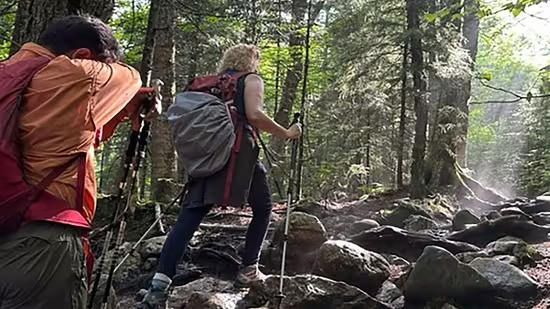Why are so many national parks aficionados dying during treks? Grim picture fails to demotivate enthusiasts
A woman hiking a remote part of Arizona's Grand Canyon tragically died in triple-digit heat earlier this month. The 57-year-old hiker was discovered dead in the Tuweep section of the national park on July 3. Parts of the Grand Canyon have even peaked at 114 degrees.

This is not the only weather-related death reported in recent times in the US. Several people hike or trek to their favourite destinations in the summer, but extreme heat makes their journeys very dangerous. National parks, especially, are threatened. Multiple heat-related deaths are reported every year, especially in the West.
The excessive heat, however, does not stop national parks aficionados from embarking on their journeys, Cynthia Hernandez, public affairs specialist for the National Park Service, told ABC News. "People are still excited about coming out to national parks in whatever condition there exists out there, even in high heat conditions," Cynthia said.
People die due to heat illness
Records provided to ABC News by the NPS revealed that more people died due to heat at this point in the summer than any other year since 2007. At least five people are believed to have died due to heat-related illnesses in national parks since the start of the summer months, as per press releases by the National Park Service.
A boy, 14, died on June 23 at Big Bend National Park in Texas, and his father died trying to look for him. A 65-year-old man was found dead inside his car on July 3, about 30 yards off-road from North Highway Death Valley National Park in California. Most recently, on July 18, a 71-year-old man died at the Golden Canyon trailhead at Death Valley National Park. In each of these deaths, heat illness is considered to be a factor, as per NPS.
People have not stopped visiting these national parks despite the danger. Grand Canyon National Park, Death Valley National Park, and Big Bend National Park have been witnessing ever-increasing visits.
Kathleen Davenport, medical director for emergency departments at the University of North Carolina at Chapel Hill Medical School, advised people to allow their body time to acclimate to their new environment before starting a journey. They should also pre-hydrate. People should avoid going out between 10 am and 3 pm, and ensure they take frequent breaks in the shade. Upon feeling lightheaded, dizzy, or nauseated, people should rest in the shade after cooling down the body with a wet shirt or towel
Disclaimer: The copyright of this article belongs to the original author. Reposting this article is solely for the purpose of information dissemination and does not constitute any investment advice. If there is any infringement, please contact us immediately. We will make corrections or deletions as necessary. Thank you.
Title:Why are so many national parks aficionados dying during treks? Grim picture fails to demotivate enthusiasts
Url:https://www.investsfocus.com







